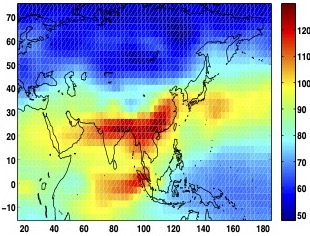A tropospheric tracer transport study using atmospheric models & observations

As degrading air quality continues to be a serious threat to the health and well-being of humans and other living beings, in the long run it is also projected to trigger challenging issues like the climate change. Estimating and quantifying the emission and transport of different polluting agents, including trace gases like carbon monoxide (CO) and particulate matters, are essential to identify the impact domain and to understand the influence of different physio-chemical factors that contribute to pollutant distributions in both horizontal and vertical directions. To date, India and China, due to their rapidly booming population and economic growth, are considered two of the countries with ominous air pollution profiles. In this work, the distribution of tropospheric carbon monoxide has been studied over south-east Asia, specifically India and China, using a 3D global chemical transport model MOZART (version-4) which includes 85 gaseous species and 12 bulk aerosols and solves the species continuity equation for each of them. Carbon monoxide is not only one of the major tropospheric ozone precursors, but also a relatively longer living species that makes it an excellent tracer in the troposphere. In the lower atmosphere, CO has a lifetime of 2-3 months, which allows it to move from its source region to intercontinental distances. Since it is one of the few gases that can be monitored from space, the model results have been extensively validated against observation from the MOPITT instrument, onboard NASA’s TERRA satellite. The present study is tailored towards identifying the dominating factors (such as advection, convection, diffusion, photochemical processes, emissions from the earth’s surface, wet and dry deposition, both homogeneous and heterogeneous reactions) that control the mixing ratio of trace gases in the troposphere and understanding how their combined effects can contribute to air pollutions over the domain of interest.